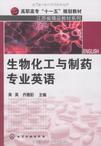生物化工与制药专业英语
出版时间:2009-9 出版社:化学工业出版社 作者:吴昊,乔德阳 主编 页数:185
前言
随着生物技术应用领域的深入、生化制药产业的发展以及国际交流的日益紧密,社会对生物工程及制药人才的素质要求越来越高,既掌握专业技能,又能熟练地掌握专业英语的人才受到众多企业尤其是中外合资企业的欢迎。为适应新时期高职高专生化与制药专业对学生的能力培养和综合素质的要求,全国高等职业教育化工专业教材编审委员会和化学工业出版社组织全国部分高等院校编写本书。本教材被江苏省教育厅立项为江苏省高等学校精品教材进行建设。 本教材特点如下: 1.从内容上改变已往专业英语教材难度大,内容晦涩,课文背景解释少的缺点,对文章中较长英语句子结构做了剖析与翻译,并附加文章背景知识与阅读材料。 2.从形式上改变已往专业英语教材单词的注释都在文章后的方式,避免大量的单词引起学生的畏惧。本教材把单词注释与文章展开同步,不仅可以避免这一缺点,而且可以更好地通过阅读记忆单词。 本教材由徐州工业职业技术学院吴昊和乔德阳主编。全书分为5个单元共21章,参加编写的有:徐州工程学院曹丹丹编写第一单元第1、2章,南京化工职业技术学院沈建华编写第二单元第3、4、5章,天津渤海职业技术学院孙皓编写第三单元第6章,徐州工业职业技术学院吴昊编写第三单元第7、8、9、11章,徐州工业职业技术学院甘聃编写第三单元第10章,山西生物应用职业技术学院党莉编写第三单元第12章,徐州工业职业技术学院乔德阳编写第四单元第13、15章,徐州工业职业技术学院张达志编写第四单元第14章,常州工程职业技术学院吴玲编写第四单元第16章,徐州工业职业技术学院阮浩编写第四单元第17、19章,江苏省徐州医药高等职业学校江君编写第四单元第18章,徐州工业职业技术学院李宗磊编写第五单元第20、21章。全书由吴昊统稿。 本书编写过程中,参考了大量的相关书籍和资料,在此谨向作者致以由衷的谢意。本书编写得到了编者所在单位的大力支持和同事们的热情帮助,从而保证了编写出版工作的顺利进行,在此表示衷心的感谢。 由于编写时间紧迫和编者水平有限,疏漏和不妥之处在所难免,恳请广大读者和同行提出宝贵意见,以便进一步修改和完善。
内容概要
本书系江苏省精品教材系列,全书共分6单元21章,讲述了生物化工的相关知识,及信息检索等内容,每章后都附有单词、短语解释,以及疑难长句注释,课后有练习题和原文的翻译参考。全书内容涉及面广,具有较强的实用性、可读性和趣味性,可提高读者的学习兴趣,帮助读者尽快掌握专业英语书刊的阅读技巧,了解文献检索及写作知识。 本书可作为高职高专院校各相关专业的教学用书,也可供从事相关工作的人员学习、阅读。
书籍目录
Unit 1 Preface Chapter 1 Translation skills Chapter 2 Special English word-formation Reading material Unit 2 Fundamental chemistry Chapter 3 Elements and compounds Chapter 4 Organic solvent Chapter 5 Biochemical reaction Reading material Unit 3 Biochemical engineering Chapter 6 Introduction 6.1 The nature of biotechnology 6.2 Historical evolution of biotechnology Reading material Chapter 7 Amino acids, peptides, and proteins Reading material Chapter 8 Enzymes Reading material Chapter 9 Nucleotides and nucleic acids Reading material Chapter 10 Fermentation and bioreactor Reading material Chapter 11 Downstream processing Reading material Chapter 12 Frontiers of biochemical engineering 12.1 Enzyme engineering Reading material 12.2 Genetic engineering Reading material 12.3 The Human Genome Project Reading material Unit 4 Pharmaceutical engineering Chapter 13 Introduction to drugs 13.1 What is a drug 13.2 Drug absorption 13.3 The history of pharmacopoeia 13.4 Good Manufacturing Practices(GMP) Reading material Chapter 14 Synthesis of drug Reading material Chapter 15 Pharmaceutical production 15.1 Clarification and filtration 15.2 Crystallization and pharmaceutical technology 15.3 Drying 15.4 Mixing Reading material Chapter 16 Industrial pharmacy 16.1 Tablets 16.2 Capsules 16.3 Injections 16.4 Packaging Reading material Chapter 17 Medicine analysis Reading material Chapter18 Modernization of traditional Chinese medicine Reading material Chapter 19 Frontiers of pharmaceutical engineering 19.1 Interferon 19.2 Principles of drug design Reading material Unit 5 Information retrieval Chapter 20 Introduction Chapter 21 The research process in the cornell university library Reading material 参考文献
章节摘录
1800s Federal controls over the US drug supply began in 1848 with the Drug Importation Act, whichrequired US Customs to stop the importation of adulterated drugs. Due to the growing necessity for safefood and drug products, in 1862 President Abraham Lincoln appointed chemist Charles M. Wetberill tohead the chemical division in the newly created Department of Agriculture. This division conductednumerous food adulteration studies. Late in the 1800s, more than 100 food and drug billst~l wereintroduced in Congress. Early 1900s In 1902, the Biologics Control Act was passed to ensure purity and safety of serums, vaccines, andsimilar products used to prevent or treat diseases in humans. Shocking disclosures of insanitaryconditions in meatpacking plants, the use of poisonous preservatives and dyes in foods, and core-allclaims for worthless and dangerous patent medicines prompted Congress to pass the Food and DrugsAct in 1906. This federal law prohibited interstate commerce in misbranded and adulterated foods,drinks, and drugs. In 1930, what had become the Food, Drug, and Insecticide Administration wasrenamed the Food and Drug Administration (FDA). 1938 FDA was involved in a five-year legislative struggle to completely revise the Food and Drugs Act.Following the death of 107 persons, mostly children, who took a poisonous Elixir of Sulfanilamide, Congress greatly strengthened the public health protection by passing the Federal Food, Drug, andCosmetic Act (FD&C Act). This new Act: extended FDAs control to cosmetics and therapeutic devices;required new drugs to be proven safe before marketing; authorized standards of identity, quality, andfill-of-container for foods; authorized factory inspections; and increased the legal tools available toenforce provisions of the Act. Mid 1900s Afire the passage of the FD&C Act, numerous amendments, standards, and laws were passed, and court cases set precedents to further define FDAs role in protecting the public health. These covered areas such as food sanitation standards, prosecution for violations, drug labeling and effectiveness, pesticide residues, biologics, food additives, packaging and labeling, low-acid canned foods, medicaldevices, infant formula, nutrition labeling, and dietary supplements. In 1949, FDA published its first guidance to industry.
图书封面
评论、评分、阅读与下载
用户评论 (总计4条)
- 内容很全,知识结构挺好
- 准备慢慢啃了。
- 大家有空看看
- 宝贝今天收到了,感觉像是旧书的样子。。。。。
